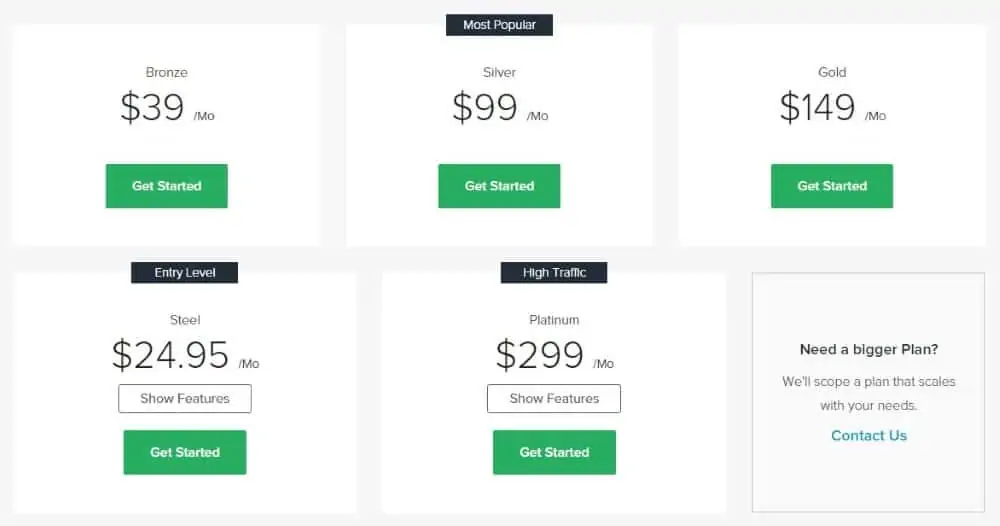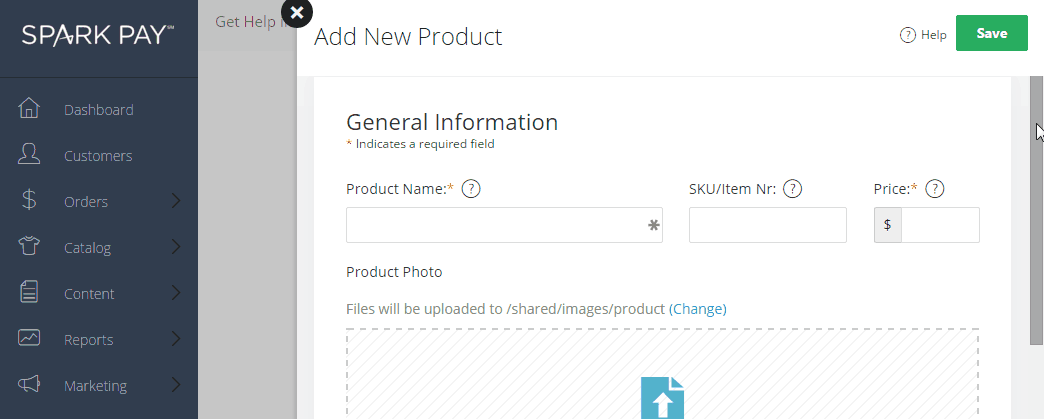With customizable designs, and the ability to tailor and tweak your store to suit, Spark Pay is a viable option for those looking to start their first store, or those aiming to develop a scalable store or “chain” of online e-commerce properties.

Spark Pay review: in a nutshell
Spark Pay is an interesting e-commerce platform that’s optimized both for businesses just starting out (and only having a handful of products), and those that already have their pre-built audiences (audiences that they can sell hundreds or even thousands of products to).
Spark Pay lets you build an online store from scratch, and have full control over each individual step of the process, from picking your design, to configuring your pages, and then adding your products and managing orders.
Additionally, Spark Pay allows you to sell not only through the online store, but also via Facebook and other third-party websites with handy embed code integrations.
Who’s Spark Pay best suited for?
Comparing Spark Pay’s offer to the other solutions on the market, I have to say that it’s going to be a good choice if you want to run more than one store at the same time, and be able to manage everything from a single dashboard.
Spark Pay lets you track all of your inventory, site traffic, customer reports, and sales growth for all of your online stores inside a single admin interface. This simplifies your work a lot, and gives you a better picture of your business’ condition as a whole.
Features in Spark Pay
Some of the most important features in Spark Pay:
- Multiple design templates available.
- Hook up a custom domain to your store.
- Mobile commerce – your store is optimized for selling via mobile.
- Landing pages – you can create them inside the Spark Pay interface.
- Have multiple storefronts.
- Shipping tools (like real-time rate calculator from UPS, FedEx).
- Taxes.
- Abandoned carts handling.
- Order fulfillment
- Sell products outside of the online store (on sites like Facebook, blogs).
- Unlimited product options.
- Product reviews.
- Wish lists.
- Inventory management.
- SEO tools and other marketing features.
- Reports and analytics.
- PCI compliance security.
Spark Pay review: pricing
Spark Pay offers 5 main pricing models:

The cheapest one – $39 / month – should be more than enough to get your store started. It lets you add up to 500 products, and have up to 3GB of traffic per month. You also get a free shared SSL as part of the deal.
The online store designs in Spark Pay
Spark Pay offers tens of design styles and templates to choose from, and a number of them are free.

Most of the themes follow the modern design trends and offer interesting presentation. That being said, the style changes a lot on a theme-to-theme basis. So make sure to choose something that’s optimized for your niche, and something that will be fit to handle the volume of content/products you expect to have in your store.
For instance, don’t get a magazine-style theme that’s optimized for hundreds of products if you’re just going to have a handful.
Managing products in your Spark Pay store
Spark Pay gives you an intuitive interface when it comes to managing everything about your store … the products, orders, other content. Right after sign-up, you’re taken through a step-by-step tour that helps you configure everything (picking a design, and so on).
Adding new products is quite easy as well. You only have to fill out a couple of mandatory fields.

Spark Pay delivers very good payment options with multiple gateways. Right off the gate, you can use PayPal, Amazon Checkout and more. Spark Pay has more than 50 payment gateways already integrated.
Review conclusion – is Spark Pay the right tool to launch your online store with?
Pros of Spark Pay
Designed for Ease of Scale: Spark Pay is designed to be quick to scale, such that your e-commerce store has capacity to grow without the need to migrate to another platform. Whether you’re starting out with 10 or 10,000 products, there’s room to grow within your system to a much bigger store when the time comes.
Robust Marketing Toolkit: Spark Pay is packed with tools, functions and applications you can use to help you market your store. Things like a strong data analysis package, plus an in-built blogging platform, strong social media integration, limited time promotions, etc., make it easier to help your shop stand out from the crowd.
Multi-Store Function: You can set up multiple storefronts from your Spark Pay account, as different customer-faces for your business. Then, manage your multiple storefronts from a single admin area, thanks to the multi-store function. This is handy for those targeting several different sectors or demographics, making it easy to pop up new front-end pages to better target your offers.
Cons of Spark Pay
Limited Range of Templates: There are only a few templates for use with Spark Pay out the box, and these can present a narrow scope of options in terms of your store design. Compared with some platforms, this can make it tougher to develop a website that is both visibly attractive and fit for its purpose.
Limited Support for International Payment Options: There are only a few different payment options supported by Spark Pay, which limits the scope for those looking to sell to some territories internationally. Make sure to check whether your preferred payment methods are supported before signing up.
Expensive Overage Fees: Even for the unlimited plan, Spark Pay charges overages – extra fees in respect of additional bandwidth usage or products being stored. These fees can quickly rack up, leaving you with a much more significant bill for your e-commerce platform than you had originally thought.

